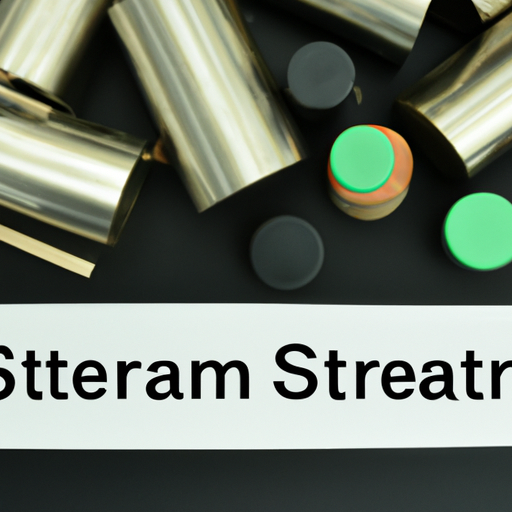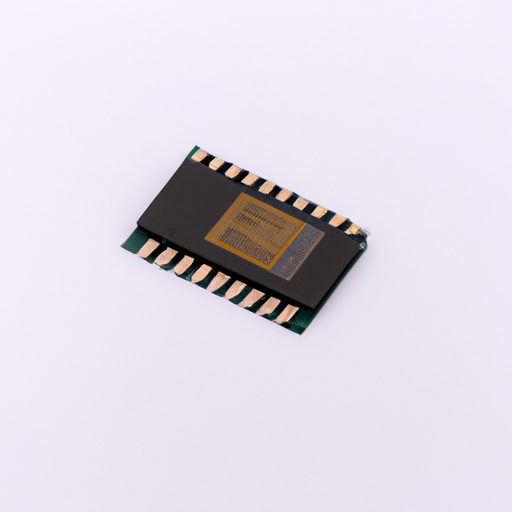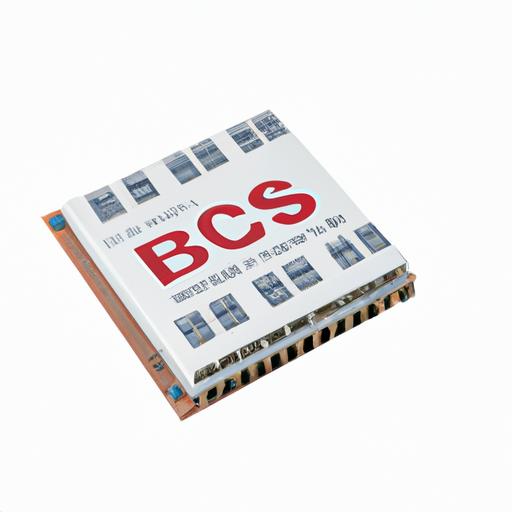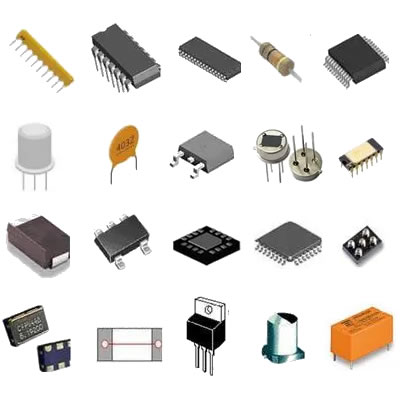What is the mainstream varistor production process?
What is the Mainstream Varistor Production Process?
I. Introduction
A. Definition of Varistors
Varistors, or voltage-dependent resistors, are crucial electronic components that protect circuits from voltage spikes. They exhibit a non-linear resistance characteristic, meaning their resistance changes with the applied voltage. This unique property allows varistors to clamp excessive voltage, thereby safeguarding sensitive electronic devices from damage.
B. Importance of Varistors in Electrical and Electronic Applications
Varistors are widely used in various applications, including power supplies, telecommunications, and consumer electronics. They play a vital role in surge protection, ensuring the longevity and reliability of electronic systems. By absorbing transient voltage spikes, varistors help prevent catastrophic failures, making them indispensable in modern electrical engineering.
C. Overview of the Varistor Production Process
The production of varistors involves several critical steps, from raw material preparation to final testing. Understanding this process is essential for manufacturers aiming to produce high-quality varistors that meet industry standards. This blog post will delve into the mainstream varistor production process, exploring each stage in detail.
II. Understanding Varistors
A. Types of Varistors
1. Zinc Oxide Varistors (ZOV)
Zinc oxide varistors are the most common type, known for their excellent voltage clamping capabilities and high energy absorption. They are primarily used in surge protection devices and are favored for their reliability and performance.
2. Metal Oxide Varistors (MOV)
Metal oxide varistors, while similar to ZOVs, utilize a broader range of metal oxides. They are often used in applications requiring higher energy handling and are known for their robustness in harsh environments.
B. Key Characteristics and Functions
1. Voltage Clamping
Varistors effectively clamp voltage spikes, preventing them from exceeding a predetermined level. This characteristic is crucial for protecting sensitive components in electronic circuits.
2. Energy Absorption
Varistors can absorb significant amounts of energy during transient events, dissipating it as heat. This ability is vital for ensuring the safety and functionality of electronic devices.
3. Non-linear Resistance
The non-linear resistance of varistors allows them to respond dynamically to changing voltage levels, providing protection without interfering with normal circuit operation.
III. Raw Materials for Varistor Production
A. Overview of Required Materials
1. Zinc Oxide
Zinc oxide is the primary material used in the production of varistors, particularly ZOVs. Its semiconductor properties make it ideal for voltage clamping applications.
2. Other Metal Oxides (e.g., Bismuth, Cobalt)
In addition to zinc oxide, other metal oxides such as bismuth and cobalt are often incorporated to enhance the performance characteristics of varistors.
3. Additives and Binders
Additives and binders are used to improve the mechanical properties and processing characteristics of the varistor material.
B. Quality Control of Raw Materials
1. Sourcing and Testing
The quality of raw materials is critical in varistor production. Manufacturers must source high-purity materials and conduct rigorous testing to ensure consistency and performance.
2. Importance of Purity and Consistency
Impurities in raw materials can significantly affect the electrical properties of varistors, leading to unreliable performance. Therefore, maintaining high standards of purity and consistency is essential.
IV. The Varistor Production Process
A. Step 1: Material Preparation
1. Mixing of Raw Materials
The production process begins with the careful mixing of raw materials. This step ensures that the various components are evenly distributed, which is crucial for achieving uniform electrical properties in the final product.
2. Particle Size Reduction
After mixing, the materials undergo particle size reduction to achieve the desired granule size. This process enhances the homogeneity of the mixture and improves the sintering process later on.
B. Step 2: Shaping
1. Pressing Techniques
The prepared material is then shaped using pressing techniques. This step involves applying pressure to form the varistor into its desired shape, typically in the form of discs or blocks.
2. Molding Processes
In some cases, molding processes may be used to create more complex shapes. This flexibility allows manufacturers to produce varistors tailored to specific applications.
C. Step 3: Sintering
1. Importance of Sintering in Varistor Production
Sintering is a critical step in varistor production, where the shaped material is heated to a temperature below its melting point. This process causes the particles to bond together, enhancing the mechanical strength and electrical properties of the varistor.
2. Temperature and Atmosphere Control
Controlling the temperature and atmosphere during sintering is vital. Variations can lead to defects or inconsistent performance, so manufacturers must carefully monitor these parameters.
D. Step 4: Cooling and Finishing
1. Controlled Cooling Techniques
After sintering, the varistors must be cooled in a controlled manner to prevent thermal shock, which can cause cracking or other defects.
2. Surface Treatment and Finishing Processes
Once cooled, the varistors undergo surface treatment to enhance their electrical properties and prepare them for final assembly. This may include polishing or coating processes.
E. Step 5: Electrical Testing and Quality Assurance
1. Testing for Voltage Rating and Clamping Characteristics
Before reaching the market, varistors undergo rigorous electrical testing to ensure they meet specified voltage ratings and clamping characteristics. This step is crucial for ensuring reliability in real-world applications.
2. Reliability Testing and Standards Compliance
Manufacturers must also conduct reliability testing to ensure that their varistors comply with industry standards. This includes testing for temperature stability, aging, and other performance metrics.
V. Advanced Techniques in Varistor Production
A. Innovations in Material Science
1. Development of New Varistor Materials
Ongoing research in material science has led to the development of new varistor materials that offer improved performance and durability. These innovations are essential for meeting the demands of modern electronic applications.
2. Enhancements in Performance and Durability
Advancements in material formulations and processing techniques have resulted in varistors with enhanced energy absorption capabilities and longer lifespans.
B. Automation and Technology in Production
1. Role of Robotics and AI in Manufacturing
The integration of robotics and artificial intelligence in varistor production has revolutionized the manufacturing process. Automation improves efficiency, reduces human error, and ensures consistent quality.
2. Impact on Efficiency and Consistency
By leveraging advanced technologies, manufacturers can achieve higher production rates while maintaining strict quality control, ultimately leading to better products.
VI. Environmental Considerations
A. Sustainability in Varistor Production
1. Waste Management and Recycling
Sustainable practices in varistor production include effective waste management and recycling initiatives. Manufacturers are increasingly focusing on minimizing waste and reusing materials whenever possible.
2. Energy Consumption and Reduction Strategies
Reducing energy consumption during production is another critical aspect of sustainability. Manufacturers are exploring energy-efficient technologies and processes to lower their environmental impact.
B. Regulatory Compliance and Environmental Standards
Compliance with environmental regulations and standards is essential for manufacturers. Adhering to these guidelines not only ensures legal compliance but also promotes responsible manufacturing practices.
VII. Conclusion
A. Summary of the Varistor Production Process
The production of varistors involves a complex series of steps, from raw material preparation to final testing. Each stage is crucial for ensuring the quality and reliability of the final product.
B. Future Trends in Varistor Manufacturing
As technology continues to evolve, the varistor manufacturing process will likely see further advancements in materials, automation, and sustainability practices. These trends will enhance the performance and reliability of varistors, meeting the growing demands of the electronics industry.
C. The Role of Varistors in Advancing Electrical Safety and Technology
Varistors play a vital role in advancing electrical safety and technology. As electronic devices become more sophisticated, the need for effective surge protection will only increase, making varistors an essential component in the future of electrical engineering.
VIII. References
A. Academic Journals and Articles
- Various academic journals on electrical engineering and materials science.
B. Industry Reports and Standards
- Reports from industry organizations on varistor standards and best practices.
C. Manufacturer Guidelines and Technical Documents
- Technical documents from leading varistor manufacturers outlining production processes and quality standards.
---
This blog post provides a comprehensive overview of the mainstream varistor production process, highlighting the importance of each step and the innovations shaping the future of varistor manufacturing.







